Wildlife Destinations in India for Nature Lovers; India, a land of stunning natural beauty, is a paradise for nature enthusiasts. From the majestic Bengal tigers to the diverse birdlife, India’s wildlife is truly awe-inspiring. With a wide range of national parks and wildlife sanctuaries, there’s something for everyone, whether you’re an avid wildlife photographer or simply looking to connect with nature.
Here are the top 10 wildlife destinations in India to inspire your next adventure:
- 1. Jim Corbett National Park, Uttarakhand
- 2. Ranthambore National Park, Rajasthan
- 3. Kaziranga National Park, Assam
- 4. Sundarbans National Park, West Bengal
- 5. Bandhavgarh National Park, Madhya Pradesh
- 6. Gir National Park, Gujarat
- 7. Periyar Wildlife Sanctuary, Kerala
- 8. Pench National Park, Madhya Pradesh
- 9. Kanha National Park, Madhya Pradesh
- 10. Manas National Park, Assam
- Conclusion
- FAQs
1. Jim Corbett National Park, Uttarakhand
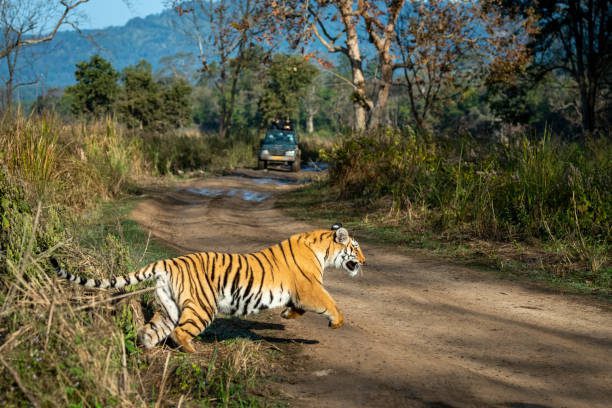
Established way back in 1936, Jim Corbett National Park holds the title of India’s oldest national park. It’s a real treat for anyone who loves tigers. As part of Project Tiger, a government plan to protect these magnificent creatures, Corbett Park plays a crucial role in their conservation.
What makes Corbett special?
- Tiger Spotting: Corbett is famous for its thriving population of Bengal tigers. It’s one of the best places in India to go on a tiger safari.
- A Wildlife Haven: Besides tigers, you can also spot elephants, leopards, deer, and over 600 different bird species.
- Safari Adventures: You can explore the park on thrilling jeep safaris or enjoy a unique elephant safari.
- Best Time to Visit: The ideal time to visit Corbett is between November and June. However, the peak season for tiger sightings is from March to May.
If you’re a wildlife enthusiast, Jim Corbett National Park is a must-visit destination.
2. Ranthambore National Park, Rajasthan
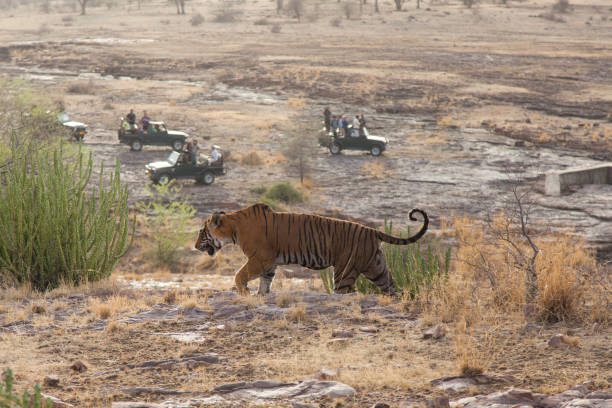
Ranthambore National Park, nestled in the dry forests of Rajasthan, is renowned for its majestic tigers. It’s also home to the historic Ranthambore Fort, a UNESCO World Heritage Site.
Why Visit Ranthambore?
- Tiger Spotting: The park’s open landscape makes it easier to spot tigers, especially near water bodies.
- A Royal Fort: The Ranthambore Fort, a magnificent historical site, offers breathtaking views of the park. You might even spot leopards or tigers basking in the sun.
- Diverse Wildlife: Besides tigers, the park is home to sloth bears, leopards, and a variety of bird species.
- Best Time to Visit: The ideal time to visit Ranthambore is between October and June. April and May are particularly good months for tiger sightings.
If you’re looking for a thrilling wildlife experience, Ranthambore National Park is the perfect place.
3. Kaziranga National Park, Assam
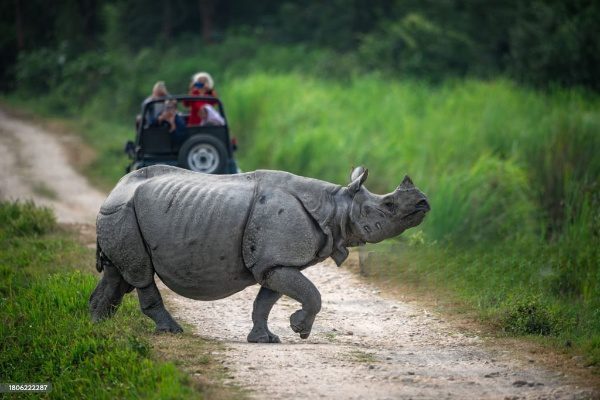
Kaziranga National Park, a UNESCO World Heritage Site, is a treasure trove of biodiversity. It’s especially famous for being home to two-thirds of the world’s one-horned rhinoceros population. This incredible park is also home to elephants, tigers, and a wide range of bird species.
Why Visit Kaziranga?
- Rhino Safari: Kaziranga is the best place to see these magnificent one-horned rhinos in their natural habitat.
- Riverine Beauty: The park’s wetlands and grasslands create a stunning landscape and support a diverse ecosystem.
- Elephant Back Safaris: Embark on an exciting elephant safari to get up close with rhinos and other wildlife.
- Best Time to Visit: The ideal time to visit Kaziranga is between November and April. The park is usually closed during the monsoon season.
If you’re a wildlife enthusiast, Kaziranga National Park is a must-visit destination.
4. Sundarbans National Park, West Bengal
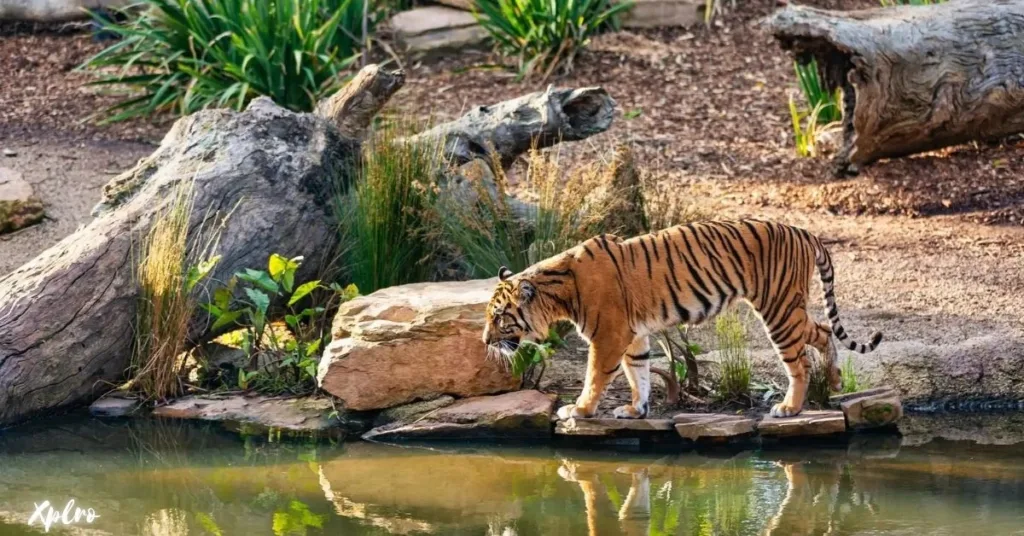
The Sundarbans, a UNESCO World Heritage Site, is the world’s largest mangrove forest. This unique ecosystem is shared by India and Bangladesh. It’s also home to the elusive Bengal tiger, which has adapted to this watery world.
Why Visit the Sundarbans?
- Mangrove Marvel: The Sundarbans’ mangrove forests are unlike anything else. They’re home to a diverse range of aquatic life and unique plant species.
- Swimming Tigers: The Bengal tigers of the Sundarbans are truly special. They’ve adapted to the swampy landscape and are known for their swimming abilities.
- A Birdwatcher’s Paradise: The Sundarbans attracts birdwatchers from around the world. You can spot a variety of birds, including kingfishers, herons, and egrets.
- Best Time to Visit: The ideal time to visit the Sundarbans is between October and March. The weather is cool and pleasant during these months.
If you’re looking for a truly unique wildlife experience, the Sundarbans is the place to be.
5. Bandhavgarh National Park, Madhya Pradesh

Bandhavgarh National Park is famous for its high tiger density, making it a great place to spot these magnificent creatures. The park’s beautiful landscape, with rolling hills and ancient ruins, adds to the overall experience.
Why Visit Bandhavgarh?
- Tiger Spotting: Bandhavgarh is one of the best places in India to see tigers in the wild.
- A Touch of History: The Bandhavgarh Fort, which is over 2,000 years old, adds a historical dimension to your visit.
- Diverse Wildlife: Besides tigers, the park is home to leopards, deer, and over 250 bird species.
- Best Time to Visit: The ideal time to visit Bandhavgarh is between October and June. March to May is the peak season for tiger sightings.
If you’re a wildlife enthusiast, Bandhavgarh National Park is a must-visit.
6. Gir National Park, Gujarat
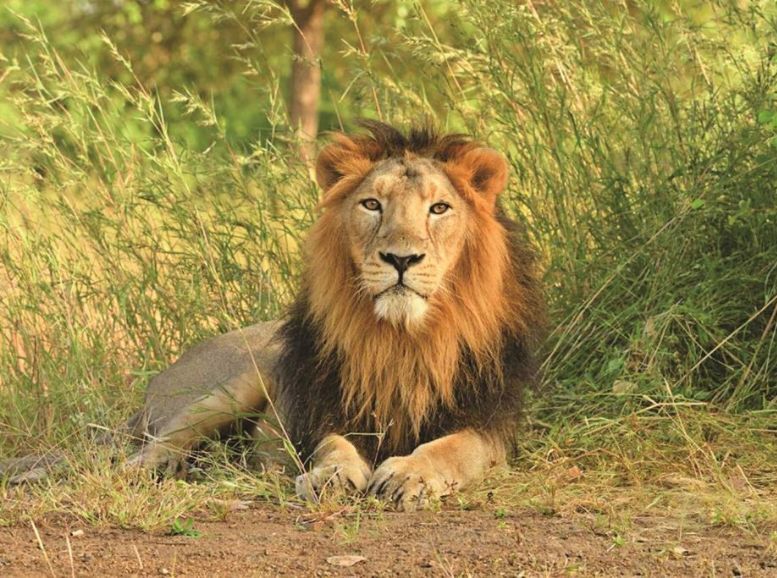
Gir National Park is a unique place, the only place outside of Africa where lions roam freely. It’s the last refuge of the majestic Asiatic lion. This beautiful forested park offers a rare chance to see these incredible animals in their natural habitat.
Why Visit Gir?
- Asiatic Lions: Gir is the only place in the world where you can see the Asiatic lion.
- Diverse Wildlife: Besides lions, Gir is home to leopards, jackals, and various deer species.
- Cultural Encounter: The Maldhari tribe, who live near the park, coexist with the lions, adding a fascinating cultural aspect to your visit.
- Best Time to Visit: The best time to visit Gir is between December and April. The park is closed from June to October.
If you’re a wildlife lover, Gir National Park is a must-visit destination.
7. Periyar Wildlife Sanctuary, Kerala
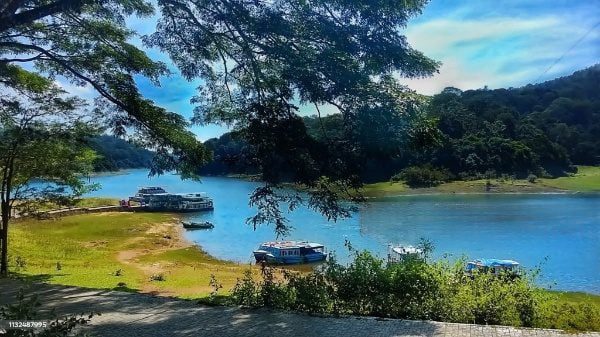
Nestled in the Western Ghats, Periyar Wildlife Sanctuary is a breathtaking blend of lush greenery, rolling hills, and a beautiful lake. It’s one of South India’s most scenic wildlife reserves.
Why Visit Periyar?
- Majestic Elephants: Periyar is famous for its large population of elephants, often seen near the lake’s edge.
- Boat Safari Adventures: Take a peaceful boat safari on Lake Periyar to spot wildlife like tigers and gaurs.
- A Birdwatcher’s Delight: The sanctuary is a paradise for birdwatchers, with a variety of species including the Malabar grey hornbill and kingfisher.
- Best Time to Visit: The ideal time to visit Periyar is between October and March, when the weather is pleasant and wildlife sightings are at their best.
If you’re looking for a serene wildlife experience, Periyar Wildlife Sanctuary is the perfect place.
8. Pench National Park, Madhya Pradesh
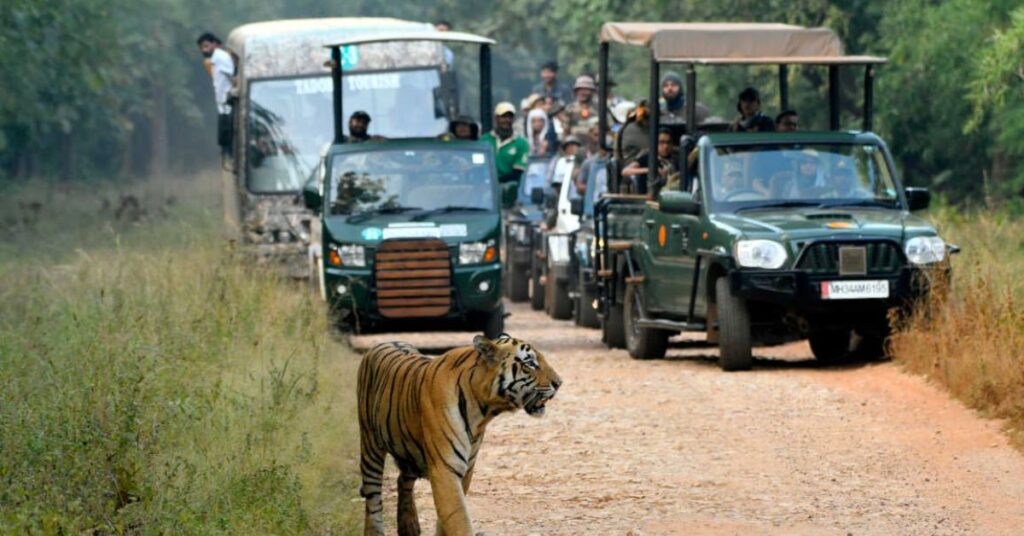
Made famous by Rudyard Kipling’s classic “The Jungle Book,” Pench National Park is a beautiful place with a thriving wildlife population, including tigers, leopards, and wild dogs.
Why Visit Pench?
- Tiger Spotting: Pench’s open terrain and water sources make it easier to spot tigers, especially during the summer months.
- Diverse Wildlife: The park is home to a variety of animals, including deer, langurs, and over 210 bird species.
- Kipling’s Inspiration: Pench is believed to be the inspiration for Kipling’s famous stories, adding a nostalgic charm to the park.
- Best Time to Visit: The ideal time to visit Pench is between October and June. March to May is the peak season for tiger sightings.
If you’re a fan of “The Jungle Book” or simply love wildlife, Pench National Park is a must-visit destination.
9. Kanha National Park, Madhya Pradesh
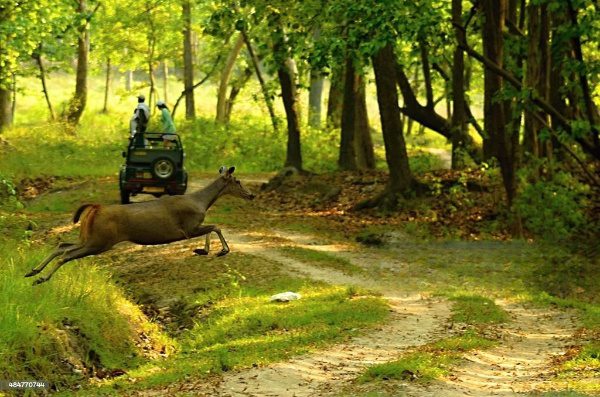
Kanha National Park, one of India’s largest national parks, is a real-life inspiration for Rudyard Kipling’s “The Jungle Book.” Famous for its thriving tiger population and successful conservation efforts, Kanha’s stunning landscapes are ideal for wildlife safaris.
Why Visit Kanha?
- Barasingha Conservation: Kanha is renowned for its successful conservation of the barasingha, or swamp deer.
- Diverse Landscapes: The park’s dense forests, meadows, and rivers create a variety of habitats for wildlife.
- Thrilling Tiger Safaris: Kanha is one of the best places in India to experience a thrilling tiger safari.
- Best Time to Visit: The ideal time to visit Kanha is between October and June. Peak tiger sightings are usually between March and May.
If you’re a wildlife enthusiast, Kanha National Park is a must-visit destination.
10. Manas National Park, Assam
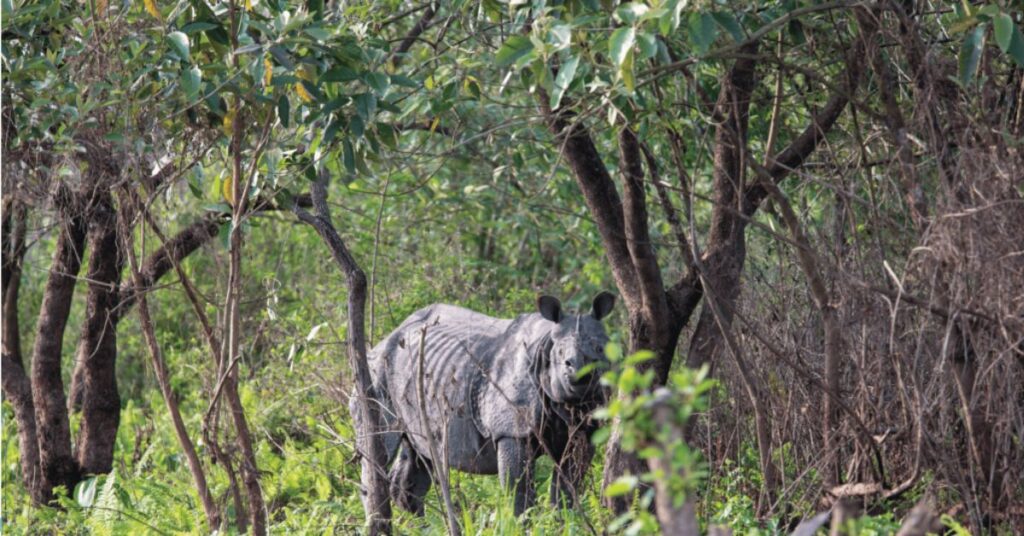
Manas National Park, a UNESCO World Heritage Site, is a stunning natural wonder nestled in the foothills of the Himalayas. Renowned for its rare and endangered species, this park is one of India’s most biodiverse.
Why Visit Manas?
- Endangered Species Haven: Manas is a sanctuary for several endangered species, including the golden langur, pygmy hog, and Assam roofed turtle.
- Breathtaking Landscapes: The park’s rivers, grasslands, and forests create a picturesque setting.
- Adventure Awaits: In addition to wildlife safaris, visitors can enjoy thrilling river rafting on the Manas River.
- Best Time to Visit: The ideal time to visit Manas is between November and April. The monsoon season can make wildlife spotting difficult.
If you’re a wildlife enthusiast seeking a unique experience, Manas National Park is the perfect destination.
Tips for Visiting India’s Wildlife Destinations – Wildlife Destinations in India for Nature Lovers
To ensure a memorable and responsible wildlife safari experience, consider these tips:
- Plan Ahead: Book your safari and accommodation in advance, especially during peak seasons.
- Choose Eco-Friendly: Opt for eco-friendly accommodations and activities to support conservation efforts.
- Follow Park Rules: Always adhere to park rules and regulations. Stay within designated areas and avoid disturbing wildlife.
- Pack Smart: Bring essentials like insect repellent, sunscreen, comfortable clothing, and binoculars.
- Respect Wildlife: Avoid loud noises, maintain a safe distance from animals, and always follow your guide’s instructions.
Conclusion
India’s wildlife destinations are a paradise for nature lovers, offering a chance to witness the country’s incredible biodiversity and ongoing conservation efforts. From the majestic Bengal tigers of Ranthambore to the rare Asiatic lions roaming Gir National Park, each park boasts unique beauty and wildlife encounters. By choosing these incredible destinations through Xplro.com, you’re not just embarking on an unforgettable adventure, you’re also contributing to the vital work of protecting India’s natural treasures for generations to come. So start planning your wildlife expedition today and discover the magic of India’s diverse ecosystems!
FAQs
1. When is the ideal time to explore wildlife parks in India?
- The optimal time to visit most wildlife parks in India is from October to March. This period features pleasant weather, enhancing wildlife spotting opportunities due to the dry conditions. However, specific parks may have distinct peak seasons, so it’s wise to check the details for each location.
2. Is it necessary to hire a guide for safaris in Indian wildlife parks?
- Absolutely. Engaging a licensed guide is highly beneficial, as they provide essential knowledge about the local flora and fauna, enhance your overall experience, and ensure that safety protocols are followed while observing wildlife.
3. What attire is recommended for visiting wildlife destinations?
- Opt for comfortable, breathable clothing in neutral tones to help you blend in with the environment. Sturdy shoes are important for walking safaris, and don’t forget to bring a hat, sunglasses, and sunscreen for sun protection.
4. What safety measures should I keep in mind during a safari?
- Yes, it’s important to adhere to your guide’s instructions, maintain a safe distance from animals, refrain from making loud noises, and avoid feeding wildlife. Stay aware of your surroundings and stick to designated pathways.
5. Can I take pictures of wildlife during my visit?
- Yes, photography is encouraged; however, it’s essential to do so without disturbing the animals. Use a zoom lens to capture images from a safe distance, and avoid using flash photography, as it can frighten wildlife.
6. Is it safe to bring children along on wildlife trips?
- Yes, many wildlife parks cater to families, but it’s vital to ensure children are aware of safety rules. Some parks may have age restrictions for specific safari activities, so it’s best to verify this information beforehand.
7. What types of accommodations can I find near wildlife parks?
- Accommodations vary from luxury lodges and resorts to budget-friendly hotels and tented camps. Many parks also offer eco-friendly lodging that provides an immersive nature experience while supporting conservation efforts.
8. Can I visit wildlife parks during the monsoon season?
- Some parks remain accessible during the monsoon months (June to September), but wildlife visibility may be reduced due to heavy rainfall and dense vegetation. It’s advisable to check the conditions and status of specific parks before planning your visit.
9. Are there wildlife tours specifically focused on birdwatching?
- Yes, numerous wildlife parks in India are fantastic for birdwatching. Locations like Bharatpur Bird Sanctuary and Keoladeo National Park are particularly famous for their diverse avian species and migratory populations. Birdwatching tours can be arranged with local guides.
10. How can I obtain permits for national parks in India?
- Permits can usually be secured online via the official website of the national park or directly at the park entrance. It’s advisable to book permits ahead of time, especially during busy tourist seasons.
11. Is travel insurance recommended for wildlife excursions in India?
- While not obligatory, having travel insurance is highly advisable. It can provide coverage for unexpected events like trip cancellations, medical emergencies, or travel disruptions, giving you peace of mind during your journey.
12. Can I engage in conservation efforts while visiting wildlife parks?
- Yes, numerous parks and wildlife organizations provide opportunities for visitors to participate in conservation initiatives. This may include volunteering for research projects, joining awareness campaigns, or supporting local communities involved in conservation activities.






